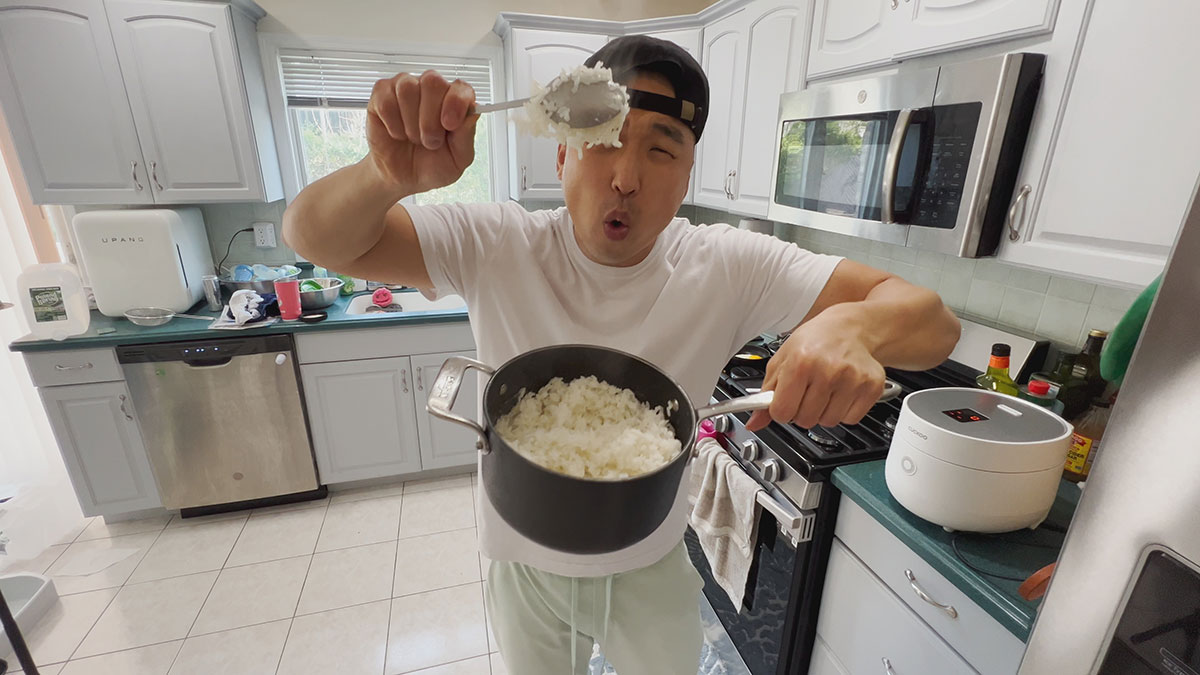The Ultimate Guide on How to Cook Kolam Rice in a Pressure Cooker
Written By James Morgan
Welcome, food enthusiasts! Today, we're diving into the art of how to cook Kolam rice in a pressure cooker. Kolam rice, a short-grain variety, is known for its unique texture and delightful aroma. It's a staple in many households, and cooking it to perfection can elevate your entire meal. This detailed guide will walk you through every step, ensuring you master the technique seamlessly.
:max_bytes(150000):strip_icc()/RESIZED-how-to-use-your-rice-cooker-482851-Ingredients-5bafc10946e0fb0026eb89cc.jpg)
Why Choose Kolam Rice?
Kolam rice, also known as 'Old Kolam', is cherished for its versatility and subtle flavor. Whether it's for a simple everyday meal or a special occasion, this variety fits perfectly. Layered with a slight scent that enhances its overall profile, Kolam rice pairs well with various dishes. Being low in starch content makes it a healthier option, especially for those mindful of their carb intake.
:max_bytes(150000):strip_icc()/__opt__aboutcom__coeus__resources__content_migration__simply_recipes__uploads__2020__03__Rice-Cookers-LEAD-14-c55e0a43686f4428be2beb8e07079414.jpg)
Essential Ingredients and Cookware
Gathering the right ingredients and cookware is paramount for achieving the best results. Below is a carefully curated list of what you'll need:
Ingredients
- 2 cups of Kolam rice
- 4 cups of water
- 1 teaspoon of salt (optional)
- 1 tablespoon of oil
Cookware
The choice of cookware significantly impacts your cooking experience. Investing in a high-quality pressure cooker can make the process smoother and more efficient.

Step-by-Step Guide on Cooking Kolam Rice in a Pressure Cooker
Step 1: Washing the Rice
Begin by measuring two cups of Kolam rice. Place the rice in a large bowl and fill it with water. Use your hands to swish the rice around, ensuring each grain is thoroughly rinsed. Drain the water and repeat this process at least three times or until the water runs clear. This step is crucial for removing excess starch, which can affect the final texture of the cooked rice.
Step 2: Soaking the Rice
Once you've washed the rice, let it soak in clean water for about 30 minutes. Soaking allows the grains to absorb some water and helps them cook more evenly. While the rice is soaking, you can take this time to gather and prepare the other ingredients and cookware you'll need. This is also a perfect time to ensure your knife set and cutting board are ready for any additional meal prep you may require.
Step 3: Preparing the Pressure Cooker
Before you start cooking, make sure your pressure cooker is clean and in good working condition. Add the drained rice to the pressure cooker. Pour in four cups of water, and then add one teaspoon of salt and a tablespoon of oil. The oil helps prevent the rice from sticking together, ensuring each grain remains separate. Secure the lid of the pressure cooker properly.
Step 4: Cooking the Rice
Place the pressure cooker on a stove over medium heat. Allow it to come to pressure, which usually takes about five minutes depending on your pressure cooker model. Once at pressure, reduce the heat to low and let the rice cook for 5-7 minutes. After this time, turn off the stove and let the pressure release naturally. This step is key for achieving perfectly cooked Kolam rice, where each grain is tender yet firm.
Step 5: Fluffing and Serving the Rice
Once the pressure has fully released, open the lid carefully. Use a fork to fluff the rice gently. Fluffing the rice helps separate the grains and enhances its overall presentation. Your delicious Kolam rice is now ready to be served. Pair it with your favorite main course or relish it as is, with a hint of ghee or a side of pickles.
Maintenance Tips for Your Cookware
Maintaining your cookware is vital for prolonged use and efficiency. Invest in a reliable cookware cleaner to keep your pressure cooker sparkling clean. Regular cleaning not only extends the life of your cookware but also ensures that each meal you prepare is as tasty and healthy as possible.
Additional Resources:
With these steps, tips, and resources, you are now equipped with everything you need to master how to cook Kolam rice in a pressure cooker. Enjoy your culinary journey and the delicious results that come with it. Remember, practice makes perfect, and the joy of cooking lies in experimenting and savoring the outcomes.
As an Amazon Associate, I earn from qualifying purchases.



